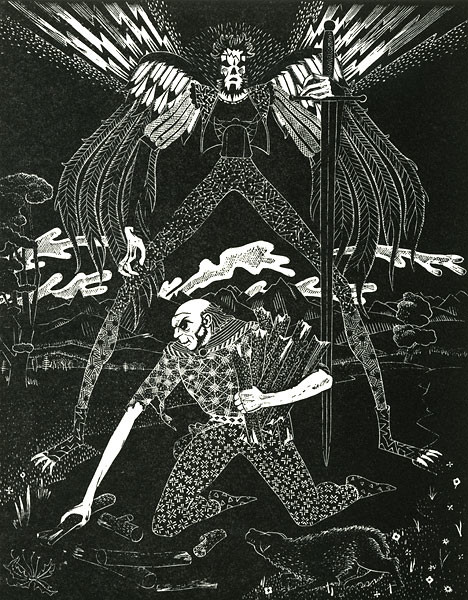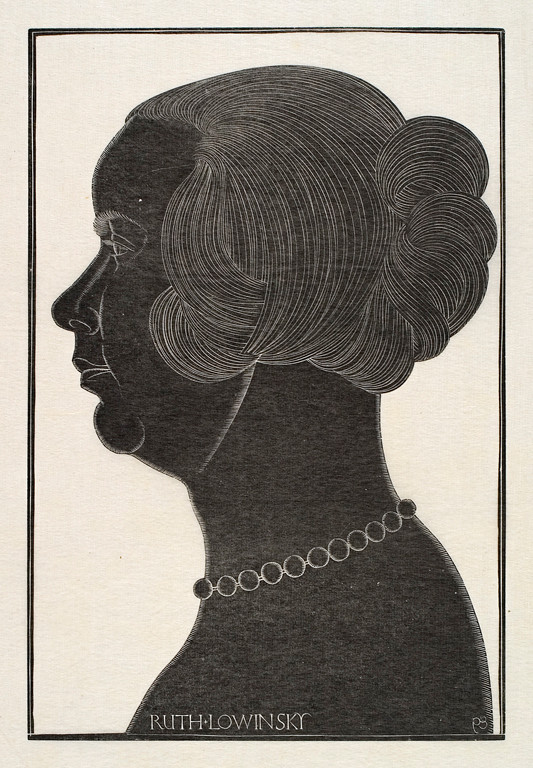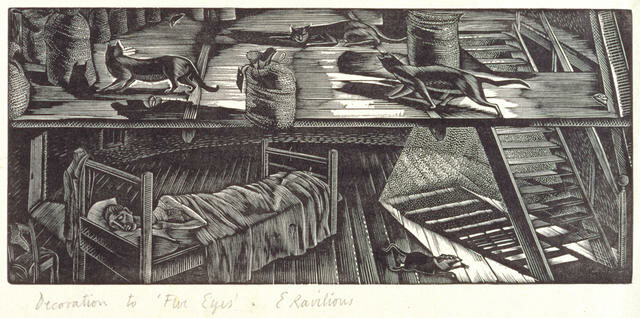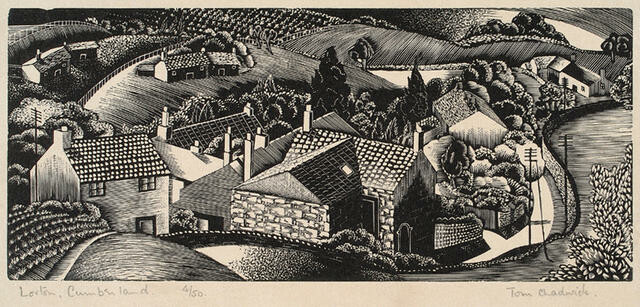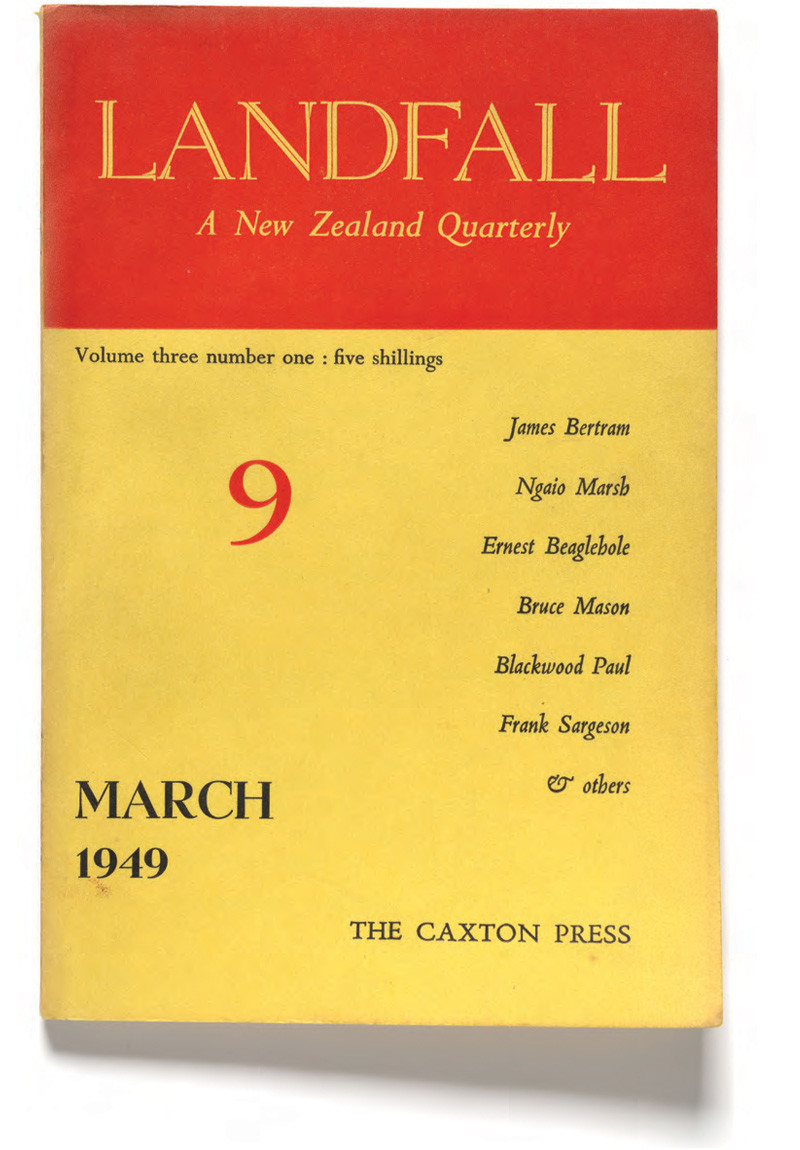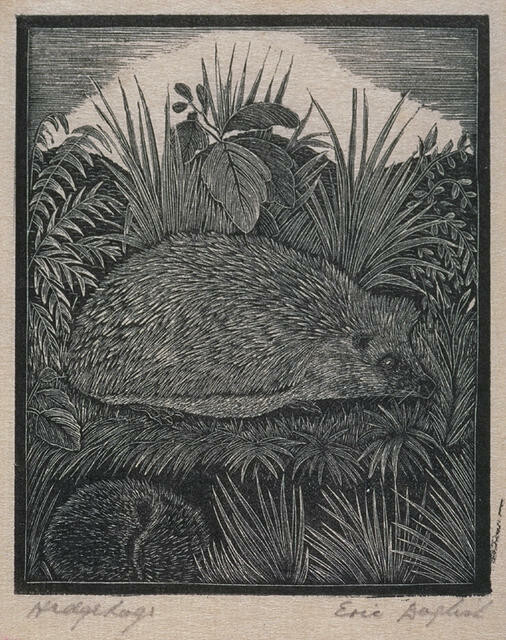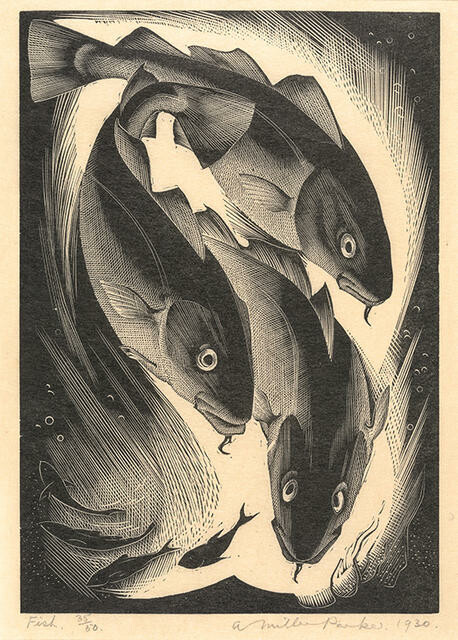B.
St Brendan and the Sea Monsters by Robert Gibbings
Collection
This article first appeared in The Press on 14 December 2005
At just 14 cm tall, the exquisite St Brendan and the Sea Monsters by Irish-born Robert Gibbings (1889-1958) is one of the smallest works in Christchurch Art Gallery's collection, but carries with it some of the largest tales. A rhythmic composition of swirling sea serpents, stingrays and sharks, this finely-crafted woodcut print tells the story of 6th century Irish explorer-monk St. Brendan, or Brendan the Navigator, whose recorded travels were an important part of medieval European folklore, and which continue to fascinate.
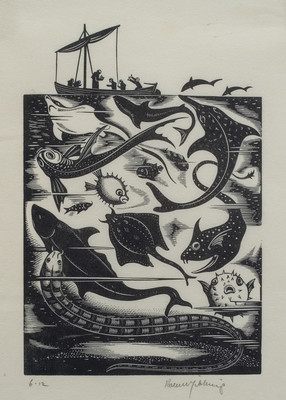
Robert Gibbings St Brendan and the Sea Monsters 1934. Woodcut. Collection of Christchurch Art Gallery Te Puna o Waiwhetū, Mrs Rosalie Archer. Reproduced courtesy of Reading University Library
Several copies of the Navigatio Sancti Brendani Abbatis (Voyage of Saint Brendan the Abbot) survive in monasteries throughout Europe, the oldest dating from the 10th or 11th century. Recounting Brendan's seven year voyage to northwest Europe, the Canary Islands, Scotland and the Faroes, the Navigatio includes a good number of fantastical events for measure. Sufficient credible geographical detail is included, however, for some scholars to believe he was the first European to reach North America. With more certainty, Brendan's accounts are believed to have influenced Columbus.
Robert Gibbings created this work for a book illustration commission for Helen Waddell's Beasts and Saints, published in 1934, an edited collection of legendary interactions between diverse creatures and early Celtic saints or Desert Fathers. In the engraving, St. Brendan stands reading to his companion monks above the animated sea creatures, despite protestation from his crew. Waddell's translation tells of Brendan celebrating the Mass in a sweet, ringing voice, until his fellow travellers implored him to sing lower. Looking below to "innumerable fishes great and fierce, such as never were discovered to human eye" they feared Brendan's chanting would anger the beasts, and place them all in danger. Accordingly, Brendan "upbraided them for fools and laughed a great laugh", continuing more solemnly than before, whereupon "the monsters of the deep began to rise on all sides, and making merry for joy of the Feast, followed after the ship. Yet when the office of the day was ended, they straightaway turned back and went their way."
Gibbings' work in Beasts and Saints demonstrates why he was regarded the leading wood-engraver of his day. Having established the Society of Wood-engravers in 1919, from 1924 to 1933 he ran the Golden Cockerel Press at Waltham St. Lawrence (near Reading), collaborating on this with others including his wife Moira, Eric Gill and Eric Ravilious. In that time he published or printed (for other publishers) almost 100 books, 21 of which he illustrated. In 1932, his marriage ended with the departure of Moira and three of their four children to South Africa. In 1933, economic woes forced him to sell his press, after which time he relocated to Cornwall, though continued to complete commissions for other publishers. Beasts and Saints dates from this time, and (with Glory of Life, another commission) caused him later to reflect that "My engravings in these two books were the best that I had so far accomplished, and gradually the sadness that I had felt at losing my Press was dissipated."
Gibbings was a colourful, larger-than-life character, a ‘bon vivant' who was also author-adventurer, naturalist, naturist, popular broadcaster and public speaker. In 1945 his appetite for adventure brought him to New Zealand - where he was welcomed as something of a celebrity - en route to two years' Pacific Island voyaging, with another book in mind. Back in Wellington in 1947 for six months to complete text and engravings, he met the artist Russell Clark, and evidently struck up a lively friendship. Following publication of Gibbings' Over the Reefs in 1948, Clark produced a deft illustration of the author for a Listener review, which Gibbings thought "a damn fine likeness", and in a letter from London in 1949 requested from Clark the original, offering "a most elegant engraving in exchange". The St. Brendan print was likely part of that agreement.
Meanwhile, the St. Brendan story has provided inspiration for others, including J.R.R. Tolkien, who published a lengthy poem, Imram, in 1955, and illustrated it with Gibbings' engraving. Brendan's travels also inspired British navigation scholar Tim Severin, who in his 1978 book, The Brendan Voyage, recounted the story of his voyage from Ireland to Newfoundland in a traditional Irish curragh, with construction details provided by the Navigatio, to determine whether a voyage to North America by Brendan and his monks might have been possible. In a boat of ox-hides tanned with oak bark, stretched over a wooden frame, sewn with leather thread and smeared with animal fat for water resistance, Severin and his crew encountered similar dangers and experiences to those of Brendan. Many times they encountered large numbers of curious and surprisingly friendly whales around their boat, but were never touched or in any way endangered by the great creatures.

